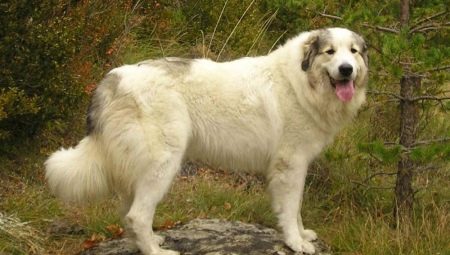The Pyrenees mountain dog is a rather unusual in appearance pet. If you want to know about what features and distinctive features are inherent in a dog, then it will be useful for you to read our article.
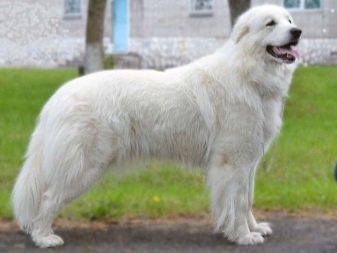
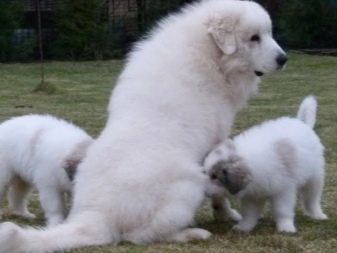
Origin history
The Pyrenees mountain dog is an animal whose birthplace is the Pyrenees mountains (a conclusion about this can be made from the name of the breed). Dogs of this breed performed the role of shepherds and protectors of cattle herds. According to scientific data, the animal appeared on the earth for a long time - about 8 thousand years ago.
It is not known for certain where these breeds came from or how, but there are suggestions that the Tibetan mastiff of white color is the ancestor of the Pyrenees mountain dog.
On the territory of Europe, animals belonging to this breed appeared during the reign of Louis XIV. He issued a decree that the Pyrenean dogs should play the role of court servants (information on this can be found in ancient chronicles that have survived to our times).
In addition, historical sources report that the Pyrenean rock dog saved Charles V from the attack of the wild boar, and therefore gained great value (not only in aristocratic circles, but also among the general public). In the XVII-XVIII centuries, the Pyrenean mountain dogs spread far beyond France and became popular in other European countries (for example, in Italy and Great Britain).
It is important to note that at the end of the 19th and beginning of the 20th centuries, animals belonging to this breed become full-fledged participants in dog shows.Also in relation to this breed canine standards are accepted at an official level.
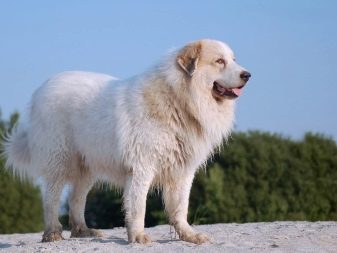
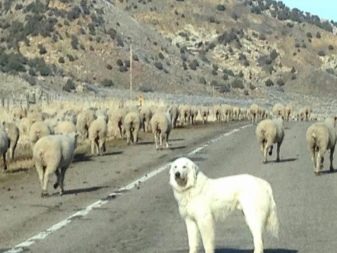
However, in the history of the existence of the Pyrenees mountain dogs there are sad pages. So, during the years of the wars (World War I and World War II), the number of animals was almost completely exterminated (and not only and not so much by force, but because of natural reasons). The thing is that such large dogs were quite difficult to maintain.
However, even in such difficult times, there were enthusiasts who directed all their efforts to preserve this breed. Such enthusiasts were French scientists who began to search for Pyrenean dogs in their homeland - in the Pyrenees mountains. Thanks to the efforts of the initiative group, the breed was restored, and already in 1960 the animals received official recognition and were included in all relevant registries.
At all, Initially, this breed performed quite specific working functions, namely, security and protective. However, to date, dogs have almost lost their natural skills, so they are perceived as ordinary pets.
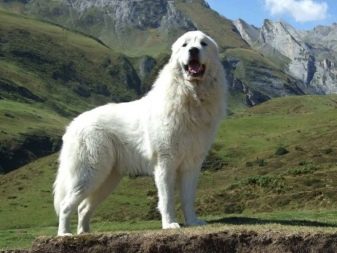
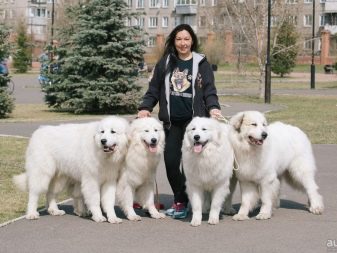
Breed description
Of particular note is the appearance of the Pyrenean mountain dog. The animal is able to make a lasting impression on almost everyone.
- The dog has a rather impressive size, thick and long white hair. In general terms, in its appearance, a dog can resemble a polar bear. There is no consensus among scientists about which category of animals of this breed should be classified: some consider them to be shepherd dogs, others - dogs or mastiffs.
- The length of the coat throughout the body of the animal is uneven. So, in the head area, the hairline is much lower than on the tail or collar.
- A wide variety of animal colors. Despite the fact that the most common color is considered white, there are other varieties that have multi-colored spots: fawn or gray. Of particular value are representatives of the breed, which have a so-called mask located on the front of the head.
- If we compare the size of the head and torso of an animal, it can be noted that the head has a rather small size. Moreover, the shape of the cranium has the correct shape.
- The jaw of the animal is quite powerful, the bite is classified as scissor. The ears have a triangular shape.
- The dog has well developed muscles. Paws (both front and rear) are parallel to each other and are erect.
- The body weight of the dog is in the range from 55 to 60 kilograms, and growth can be from 65 to 80 centimeters (indicators of females are lower than in males).
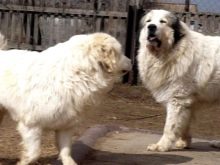
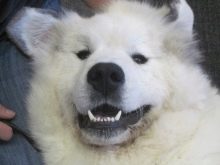
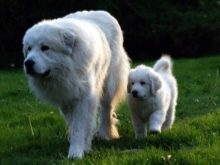
Nature and behavior
It is believed that Pyrenees mountain dogs are animals that exhibit qualities such as nobility, courage and highly developed intelligence. Dogs are not prone to aggression, they are calm and patient.
The nature of a particular individual begins to manifest itself from a fairly young age. At that moment, when the puppy has reached 4 months of age, the character and behavior patterns that will be inherent in the animal throughout life begin to manifest.
That is why during this period you should especially seriously engage in training and training a puppy.
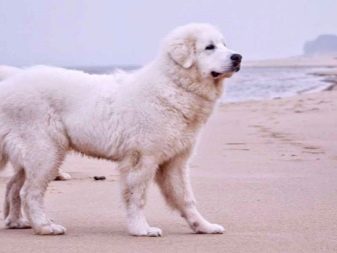
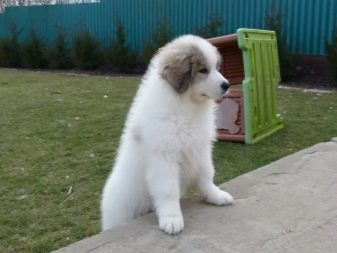
Important character traits of the animal that many owners highlight are loyalty and devotion. Animals are friendly and affectionate not only to their immediate owner, but also to all members of the family. In addition, you can not be afraid to start other pets - the Pyrenean dog gets along well even with cats. However, at the same time, the fact that in relation to unfamiliar and strangers, the animal can be aggressive, growl and bark (especially if the dog feels any danger).
Pyrenean dogs can even be brought to those people who lead an active lifestyle, are in constant trips and business trips. Despite the fact that the four-legged pet loves company, it easily tolerates loneliness and does not experience negative emotions about this.
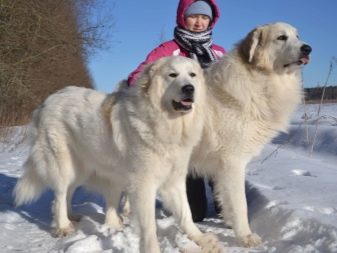
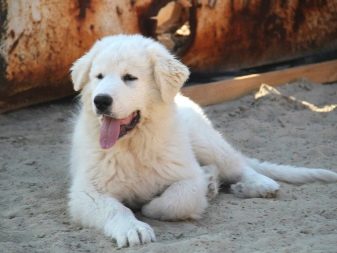
Maintenance and care
First of all, it is worth considering the fact that due to the rather impressive dimensions of the animal, it will not be able to live in the cramped conditions of a city apartment. However, even if you plan to keep the dog in your own area, you should not put it in an aviary or put on a chain. Iberian breed is considered independent and freedom-loving, therefore, any constraint on her life can lead to mental, and later to physiological abnormalities.
In the process of keeping the animal, it is important to remember that the dog needs regular long walks. Moreover, these walks should be accompanied by active games and training.
In addition, it is important to regularly carry out hygiene procedures: combing, bathing, cleaning. It is recommended to comb the dog at least 3 times a week. Otherwise, the coat may become tangled. Water procedures should not be carried out too often, the optimal regularity is 1 time in 3 months. It is also important to follow behind the condition of the ears, eyes and teeth of the animal.
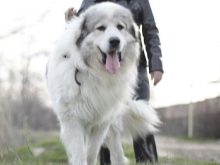
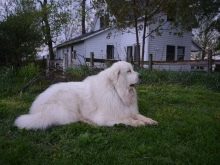

Feeding
By their nature, Pyrenees mountain dogs are predatory animals. That is why the basis of the animal's diet should be meat and meat products saturated with protein. This category also includes products such as eggs, cottage cheese, fish. It is desirable for the animal to boil fish and meat.
It is mandatory to feed your dog raw vegetables and fruits. These products positively affect the formation of the intestinal microflora of the dog’s intestines and, in general, have a positive effect on the body.
Contrary to popular belief, dogs should not be given porridge, since cereals are poorly absorbed by the animal. On the contrary, they can lead to weight gain and even obesity.
If you decide to feed your pet dry ready-made mixtures, then choose premium food, as well as food compositions that belong to the super-premium category.



Parenting and training
The Iberian breed of dogs has developed mental abilities, so individuals belonging to this species quickly and easily remember not only simple basic commands, but also more complex and complex tricks.
In the process of training, it is important to be strict and in no case should you give slack. Otherwise, you will lose your authority in the eyes of the animal, and it will feel the main thing.
If in this regard you are not confident in your abilities, then entrust the training process to professionals and enroll your pet in specialized dog training courses.

See more about breed features in the next video.
